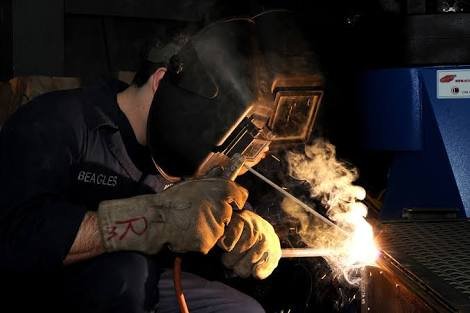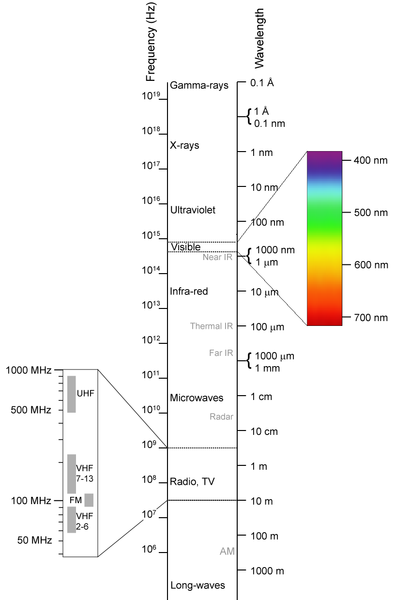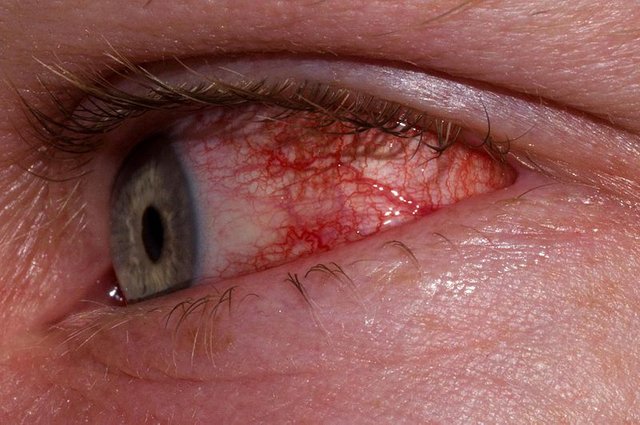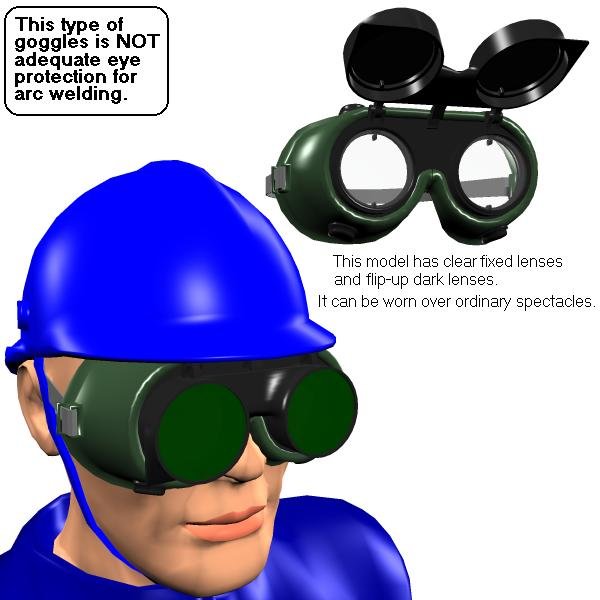WICKED HAZARDS - The Arc Eye | What An Inexperienced Welder May Suffer
Hello Guys
Once again, its @synick, and I want to share something new I just researched a few days ago, which was prompted by my experience in the laboratory. For anyone who doesn’t know, I am an upcoming electrical and electronics engineer(a student). On 30th may 2018, I and some of my course mates went to the production engineering laboratory, in the university of Benin, Nigeria, to take a short course in the hot shop, where we were introduced to welding practice.
Before we started the course, I saw one of the instructors using the arc welding machine, and what captured my attention most, was the arc and ultraviolet rays, that were released during the process. I’m sorry I didn’t take photos. Using gadgets in the lab is prohibited -Safety reason.
Forgive me.
The reason why my thoughts were so focused on the radiation, was because of the sharp pain I felt, in response to looking at it, which stimulated me to move my face away, immediately. Another reason, was the thought of how constant staring could cause great damage, and also the fact that I use medicated glasses. Throughout the experiment, I tried my best not to look at the rays, not even with goggles, because it was the first time I was so close to such working process, and because of what I heard of people who practise welding.
 [CC0 public domain, no attribution] , from Pxhere
[CC0 public domain, no attribution] , from Pxhere During the course, we were taught some of the safety precautions to be taken while welding. One of which, was wearing welding goggles and helmets to prevent ARC EYE. The term arc eye wasn’t explained further to us because we weren’t in a biology class. So, out of curiosity and great concern, and among everything I was taught, I decided to single out, and research further, on what the arc eye was, relating to welding.
WELDING AND THE EYE

Parts of the eye. Author: Cancer research UK, licensing under Creative Commons Attribution-Share Alike 4.0 International. From wikimedia Commons
Above is the diagram of the eye. Our main focus here is the cornea and the conjunctiva. The cornea is the clear and transparent outermost layer of the eye, with functions of filtering UV radiations and focusing light rays for clear vision. The conjunctiva is a thin membrane which covers the front surface of the eye, with primary purpose of keeping the eye moist, lubricated and protected from tiny particles, including microorganisms. It is linked with the cornea.
Whenever these parts of the eye, suffer inflammation or burns, as a result of excess UV rays entering the eye, a condition called conjunctivitis occurs. Other terms to define the conjunctivitis includes, the 'arc eye', 'arc flash', 'keratoconjunctivitis photoelectrica', 'photokeratisis' etc. In welding, it can also be called 'welder’s flash'.
During welding, the arcs gives off radiations of a large wavelength range. The range depends on the transformer rating and the input current of the welding machine. The range includes the UV radiations, visible light and infrared rays. Within this range of wavelengths, the UV radiation has the shortest, which is about 100nm – 400nm(nanometers). If you are an engineer, you’ll understand that from the above statement, the UV rays, have the highest frequency among the emitted rays, and therefore the highest penetrating speed. This speed exceeds that of the can be visible to the eye i.e visible light(see chart above). Therefore, the UV radiation at a certain intensity(closeness), is dangerous to the eyes.
 Electromagnetic spectrum. Author: Penubag (talk · contribs). Licensing under, Creative Commons Attribution-Share Alike 2.5 Generic. From Wikimedia commons
Electromagnetic spectrum. Author: Penubag (talk · contribs). Licensing under, Creative Commons Attribution-Share Alike 2.5 Generic. From Wikimedia commons
When the UV radiation reaches the eye, the section with the longest wavelengths (280nm to 400nm) is absorb by the cornea and maybe, the lens of the eye, and the other section with the shortest wavelength, passes through, to the retina.
Long exposure of the eye to these rays at high intensity(close distance range), stresses its nerves out and injures the surface(cornea) and membrane(conjunctiva). At this point, the eye suffers from arc eye.
SYMPTOMS
 Conjunctivitis. Author: Rbmorley[CC0 public domain] , from Wikimedia Commons
Conjunctivitis. Author: Rbmorley[CC0 public domain] , from Wikimedia Commons Studies have confirmed that the symptoms of arc eye don’t just appear immediately after exposure, even if there was a sharp response to the stimulation, from looking at the arc. A few hours after long exposure to the radiations, one starts to experience the following:
Firstly, mild or severe pain in the eyes
Reddening of the conjunctiva (bloodshot)
Photophobia and high sensitivity to light, even of low brightness.
The severity of these symptoms once again depends on how close you are to the arc and how long you are exposed.
We must note that the eye is very sensitive, and even just short exposure could cause a whole lot of damage. Besides that, the arc eye isn’t the only hazard in the welding processes, even concerning the radiations and the eye. When the lens of the eye absorbs too much rays, it gets clouded and vision gets blurry, this is known as cataract. It is a long term effect i.e manifests itself after series of exposure. Other possible hazards of the radiations, are skin burn on unprotected skin and the extreme of all, skin cancer.
I can’t really give a broad enlightenment on this paragraph because it is not really my field. Although, I’ll try my best to ensure that, links to external blogs will be provided at the end, to enable you read more on these hazards.
Welding Safety Against Radiations
 Goggles. Author: Anthony Appleyard[CC0 public domain] , from Wikimedia Commons
Goggles. Author: Anthony Appleyard[CC0 public domain] , from Wikimedia Commons
CONCLUSION
Basically, each engineering process has its own errors, hazards, dangers, rules and precautions. As an engineer you must follow the rules to avoid hazards, and to yield perfect results. When welding, always be careful of the radiations, because to a certain extent and beyond it, they are dangerous. Therefore always read manuals and ask help from experts and instructors, and above all, be Safety conscious.
REFERENCES
Katie Martinelli, What is arc eye? A guide to the dangers of arc welding. 2017
EXTERNAL LINKS
If you write STEM (Science, Technology, Engineering, and Mathematics) related posts, consider joining #steemSTEM on discord here. If from Nigeria, there may be need to include the #stemng tag in your post. You can visit this blog by @stemng for more details. You can also check this blog post by @steemstem here and this guidelines here for help on how to be a member of @steemstem. Please also check this blog post from @steemstem on proper use of images devoid of copyright issues here
As a follower of @followforupvotes this post has been randomly selected and upvoted! Enjoy your upvote and have a great day!
Congratulations @synick! You have completed some achievement on Steemit and have been rewarded with new badge(s) :
Click on the badge to view your Board of Honor.
If you no longer want to receive notifications, reply to this comment with the word
STOPHi @synick!
Your post was upvoted by utopian.io in cooperation with steemstem - supporting knowledge, innovation and technological advancement on the Steem Blockchain.
Contribute to Open Source with utopian.io
Learn how to contribute on our website and join the new open source economy.
Want to chat? Join the Utopian Community on Discord https://discord.gg/h52nFrV